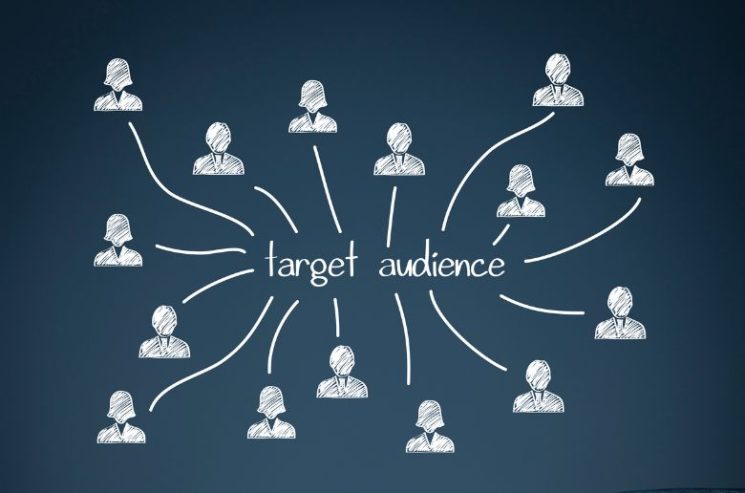Creating Effective Native Ad Campaigns for E-commerce
Online shopping has become the norm, so standing out in the crowded e-commerce space is more critical than ever. One effective way to capture the attention of potential customers is through native advertising, a type of advertising that matches the form and function of the platform it appears on, thus providing a less intrusive and more engaging user experience.
This guide aims to assist e-commerce business owners in designing and implementing native advertising campaigns that not only resonate with their target audience but also drive desired outcomes, be it brand recognition, user engagement, or sales conversions.

Understanding Native Advertising
A. Definition and Characteristics of Native Advertising:
Native advertising is an advertising method in which the ad content follows the natural form and function of the user experience in which it is placed. Unlike traditional advertising, native ads do not disrupt the user’s flow as they seamlessly blend with the platform’s content, making them feel less like ads and more like part of the content. Key characteristics include contextual relevance, a consistent look and feel with the platform it appears on, and a non-disruptive approach to promoting a brand or product.
B. Importance of Native Advertising in the E-commerce Landscape:
Native advertising holds a significant place in the e-commerce realm due to its ability to build a stronger connection with consumers. It allows e-commerce platforms to promote their products or services in a manner that adds value to the consumer’s experience rather than interrupting it. Furthermore, with the rising use of ad blockers, native advertising stands as a more effective way to reach and engage audiences, consequently improving brand recall, user engagement, and conversion rates.

Setting Clear Objectives
A. Defining the Primary Goal:
The first step in creating an effective native advertising campaign is to define what you want to achieve. Goals could range from boosting brand awareness, driving engagement, and increasing website traffic, to escalating sales conversions. Having a clear objective will guide the design and implementation of your campaign ensuring a coherent strategy.
B. Identifying Target Metrics:
Metrics are the compass that will guide your campaign towards its defined objectives. Depending on your goal, crucial metrics could include Click-Through Rate (CTR), conversion rate, engagement rate, time spent on the page, or the number of new followers/subscribers. Identifying the right metrics will provide insight into the performance of your campaign and areas for optimization.

Target Audience Analysis
A. Identifying and Understanding the Target Audience:
Knowing who your audience is, and understanding their needs and preferences is foundational to the success of your native advertising campaign. Conduct market research, and surveys, and analyze existing customer data to gather insights about your target audience. This understanding will help in tailoring the campaign to resonate well with the audience, ensuring better engagement and conversion rates.
B. Creating Buyer Personas:
Buyer personas are semi-fictional characters that represent your ideal customers. Create detailed personas by including demographic information, behavioral tendencies, interests, pain points, and buying motivations. These personas will guide the content creation process, ensuring it aligns with the interests and needs of your target audience.
C. Utilizing Data Analytics for Audience Segmentation:
Data analytics tools can provide invaluable insights into the behavior and preferences of different audience segments. Use these tools to segment your audience based on various factors such as demographics, online behavior, and purchasing history. Tailored campaigns for different segments can significantly improve the effectiveness and ROI of your native advertising campaign.

Content Creation
A. Crafting Compelling Headlines and Copy:
The headline is often the first thing your audience will see, so it needs to be compelling enough to capture their attention. Similarly, the copy should be engaging, informative, and aligned with your brand’s voice. It’s essential to maintain a natural and conversational tone that resonates with the platform’s audience while conveying your message effectively.
B. Incorporating Visuals: Images, Videos, and Infographics:
Visual content can significantly enhance the engagement level of your campaign. Use high-quality images, videos, and infographics to illustrate your message. Visuals should complement the text, providing a cohesive and engaging user experience. It’s also crucial that the visual content maintains the native look and feel of the platform it appears on.
C. Creating a Strong Call-to-Action (CTA):
A compelling Call-to-Action is crucial for driving the desired user action, be it making a purchase, signing up for a newsletter, or sharing the content. Ensure your CTA is clear, concise, and enticing, motivating users to take the desired action. Position it prominently within your content, making it easy for users to take the next step in their buying journey.

Choosing the Right Platforms
A. Analyzing Different Platforms for Native Advertising:
There are numerous platforms available for native advertising, each with its own set of features and audience demographics. Examples include social media platforms, search engines, and content platforms like Ad Nativia. Conduct a thorough analysis to understand the reach, demographics, and types of native ads. Assessing the platform’s performance through case studies or reviews can also provide insights into what to expect.
B. Selecting Platforms that Align with the Brand and Target Audience:
Choosing the right platform is critical for the success of your native advertising campaign. Select platforms that align with your brand’s ethos and where your target audience spends their time. Ensure the chosen platform supports your campaign goals and has the analytical tools necessary for monitoring and optimizing your campaign.

Budgeting and Bidding
A. Setting a Realistic Budget:
Budgeting is a crucial aspect of your native advertising campaign. Determine a budget that aligns with your campaign goals, keeping in mind the cost of creating content, platform charges, and other associated costs. A well-planned budget will ensure that your campaign can run for the desired period without financial hiccups, allowing for better planning and execution.
B. Understanding Bidding Strategies for Native Advertising:
The bidding strategy you choose will significantly impact the cost and effectiveness of your campaign. Familiarize yourself with different bidding strategies like Cost Per Click (CPC), Cost Per Mille (CPM), or Cost Per Acquisition (CPA). Experiment with different bidding strategies to find what works best for your campaign, and continuously monitor and adjust your bids to ensure you are getting the best ROI. Utilizing automated bidding options provided by many platforms can also help in optimizing the budget and improving campaign performance.

Tracking and Optimization
A. Implementing Tracking Pixels and UTM Parameters:
To accurately measure the performance of your native advertising campaigns, it’s imperative to implement tracking mechanisms like pixels and UTM parameters. Tracking pixels allows you to see how users interact with your website after clicking on your ads, while UTM parameters help in tracking the source of your traffic. These tools provide invaluable data that will help in analyzing and optimizing your campaign performance.
B. Analyzing Performance Metrics:
Regularly review key performance metrics such as Click-Through Rate (CTR), Conversion Rate, Bounce Rate, and Time Spent on the Page. These metrics provide insights into how well your campaign is performing and where there is room for improvement. Utilize platform analytics and other analytics tools to gather and analyze this data to make informed decisions.
C. A/B Testing and Campaign Optimization:
A/B testing is crucial for understanding what elements of your campaign are working and what aren’t. Test different headlines, images, and call-to-actions to see what resonates best with your audience. Based on the insights gained from A/B testing, continuously optimize your campaigns for better performance. This iterative process will help in refining your campaigns, ensuring better engagement and higher conversion rates.

Measuring Success
A. Evaluating Campaign Performance Against Set Objectives:
At the end of your campaign, or even during, evaluate the performance against the objectives set at the outset. Assess whether the goals regarding brand awareness, engagement, or conversions have been met. This evaluation will provide a clear picture of the campaign’s success and areas that may require improvement in future campaigns.
B. ROI Analysis: Assessing Cost Per Acquisition, Return On Ad Spend, etc.:
Understanding the return on investment (ROI) is crucial for measuring the success of your native advertising campaign. Assess metrics like Cost Per Acquisition (CPA) and Return On Ad Spend (ROAS) to understand the financial effectiveness of your campaign. An analysis of these metrics will provide insights into how well your advertising spend is translating into desired actions and whether the campaign is financially viable.

Learning and Scaling
A. Documenting Learnings from the Campaign:
Each campaign is a reservoir of learning. Document the insights gained, the challenges faced, and the solutions devised. Analyze the performance metrics, and understand what worked and what didn’t. This documentation will serve as a valuable resource for future campaigns, helping to avoid past mistakes and build on successful strategies.
B. Scaling Successful Campaigns and Exploring New Platforms or Strategies:
Once a campaign proves successful, consider scaling it to reap more benefits. This could involve increasing the budget, expanding the target audience, or even replicating the campaign on other platforms. Simultaneously, keep exploring new platforms and advertising strategies to find additional avenues for growth. The digital advertising landscape is ever-evolving, and staying updated with new platforms and strategies will provide a competitive edge.

Conclusion
The journey through devising, implementing, and optimizing a native advertising campaign is a meticulous one, filled with strategic decisions at every juncture. The potential of native advertising in driving significant traffic and conversions for e-commerce platforms is substantial.
This guide provides a roadmap for creating effective native advertising campaigns that resonate with the audience and achieve the desired objectives. As the digital realm continues to evolve, staying adept with the latest in native advertising will empower e-commerce businesses to remain competitive and continually grow.
Delve deeper into the world of native advertising and stay updated with the latest trends and insights by subscribing to our email list. By doing so, you’ll gain a wealth of knowledge that could be the catalyst for your next successful native advertising campaign.
Enter your email below to subscribe and take your e-commerce advertising efforts to the next level!
[mailpoet_form id=”2″]

